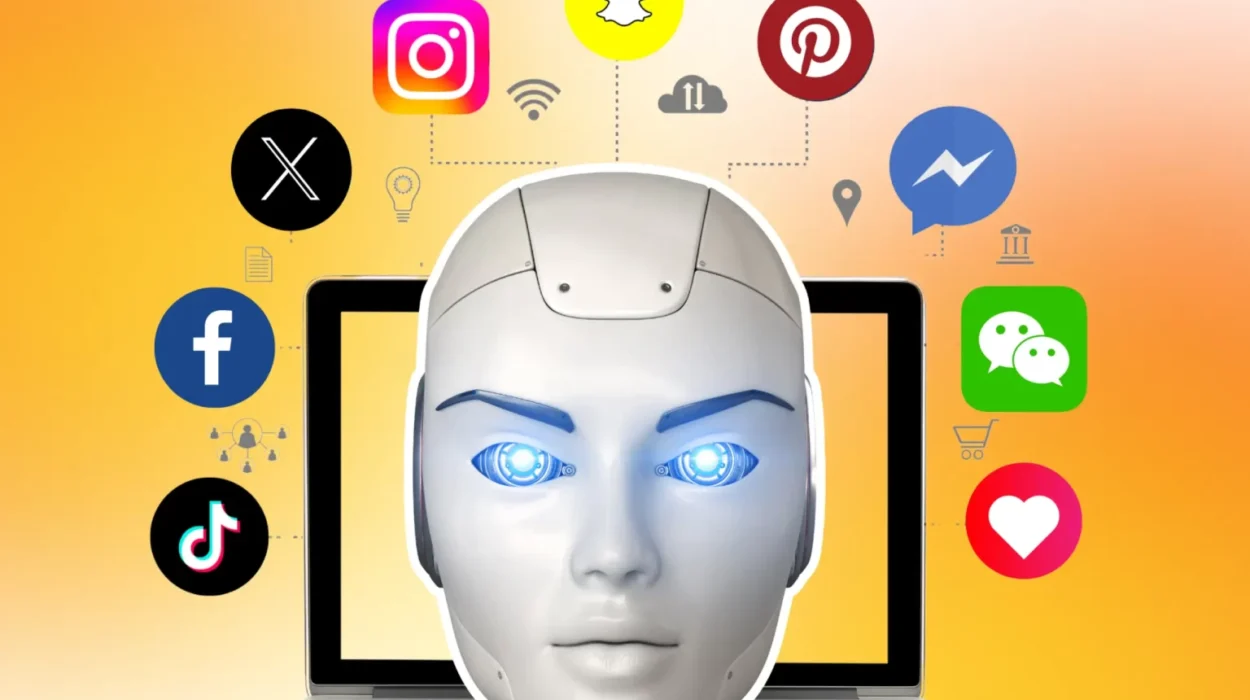Imagine standing at the edge of a vast, uncharted ocean. The water glimmers with promise, the horizon stretches infinitely, and the air hums with the anticipation of discovery. This is the moment where the story of a career in machine learning begins—especially if you have no experience yet, but a heart full of curiosity and a mind ready to grow.
Machine learning isn’t just a technical skill—it’s a revolution, a new way to understand the world through patterns and predictions. The digital age hums with data, and those who learn to listen to it can shape the future. If you feel daunted by the complexity or held back by your lack of experience, know this: every expert was once a beginner standing exactly where you are now.
The journey into machine learning is both an intellectual challenge and a deeply human story of perseverance, creativity, and relentless wonder.
The Call of Curiosity
What drives anyone to step into machine learning? For some, it is the thrill of making machines learn from data, unlocking secrets hidden in massive datasets. For others, it is the vision of building smarter tools to solve real-world problems—from diagnosing diseases to predicting climate change.
Starting with no experience means you are at a powerful advantage: the clean slate of curiosity. This fresh perspective allows you to ask questions others might miss, to approach problems with humility and wonder. Embrace this mindset. Let your curiosity be the compass that guides your exploration.
Curiosity is not just a feeling but a discipline. It demands patience and willingness to face complexity without fear. As you stand at the threshold of this vast field, remind yourself that every algorithm, every breakthrough, was once a mystery someone dared to understand.
Understanding the Landscape
Machine learning is a sprawling ecosystem. It blends mathematics, statistics, computer science, and domain expertise. This breadth can feel overwhelming at first, like learning a new language where every word sounds strange. But it’s important to remember that you do not need to master every corner all at once.
Start by understanding the core concepts—the essence of what machine learning is. At its heart, machine learning is about creating systems that improve automatically through experience. These systems sift through data, detect patterns, and make predictions or decisions without being explicitly programmed for every single task.
There are three broad types of learning: supervised, unsupervised, and reinforcement learning. Supervised learning uses labeled data to teach machines; unsupervised learning finds hidden structures in data; reinforcement learning trains machines through trial and error in dynamic environments.
Don’t rush to memorize algorithms or mathematical proofs right away. Instead, immerse yourself in the stories behind these methods—the problems they solve, the journeys their inventors took, and the impact they create.
Embracing the Beginner’s Mindset
To start from zero is both humbling and liberating. You do not carry the weight of assumptions or outdated knowledge. This fresh start lets you absorb foundational ideas deeply.
Beginner’s mindset means welcoming mistakes as milestones, not failures. When your code crashes or a model doesn’t perform as expected, it’s not a setback—it’s a lesson. Each error reveals a crack in understanding waiting to be filled.
This mindset is your most valuable tool. It keeps frustration at bay and invites continuous learning. It fuels resilience, which is essential because the path through machine learning is long and filled with challenges.
Consider how Einstein once described his own learning: “It’s not that I’m so smart, it’s just that I stay with problems longer.” Persistence born of curiosity and humility is the secret ingredient to mastery.
Building Foundations: The Language of Machines
Language is the gateway to any discipline. In machine learning, the language is mathematics and programming.
Mathematics may seem intimidating, but it is less about memorizing formulas and more about understanding concepts. Linear algebra introduces you to vectors and matrices, the building blocks of data representation. Calculus helps explain how models learn by adjusting parameters. Probability and statistics teach how to handle uncertainty and variation in data.
Think of mathematics not as a hurdle, but as a toolkit—a set of lenses through which you can view data and algorithms with clarity. Embrace its logic and intuition step by step. Even a gentle, consistent approach—learning just a little each day—builds a sturdy foundation over time.
Programming is the voice you use to speak with machines. Python has become the de facto language of machine learning for its simplicity and powerful libraries like NumPy, pandas, TensorFlow, and PyTorch.
If you are new to coding, start with basic Python tutorials that emphasize writing clear, readable code. Practice by experimenting, creating small scripts to manipulate data or solve puzzles. Programming is not only about syntax but problem-solving—learning how to break complex tasks into manageable pieces.
The First Steps: Hands-on Exploration
Theory is vital, but machine learning lives in the dance between data and algorithms. The moment you write your first line of code to build a model, something transforms inside: concepts leap off pages into tangible forms.
Begin with small, manageable projects. Kaggle, a platform for data science competitions, offers datasets and community support that welcome beginners. Playing with real data lets you grasp the joys and frustrations of cleaning messy data, tuning models, and evaluating results.
Each project you undertake is a story—an experiment where you hypothesize, test, and refine. You will encounter unexpected quirks in data, puzzling model behaviors, and thrilling moments when predictions start to make sense.
Machine learning is as much art as science. Your intuition will grow with every experiment. Don’t shy away from exploring different approaches, even if they seem unconventional.
Finding Mentors and Community
Learning in isolation can feel like shouting into the void. One of the most valuable steps in starting your career is connecting with others.
Communities—online forums, local meetups, university groups—are fertile grounds for inspiration and guidance. Here, you find mentors who have walked the path and peers who share your struggles.
Mentors don’t just offer answers; they share perspectives, resources, and encouragement. A single conversation can illuminate your next steps or restore your confidence on a tough day.
Moreover, teaching others—whether through blogs, tutorials, or discussions—cements your own understanding. The machine learning community values openness and collaboration, and you can grow by both learning and contributing.
Building a Portfolio That Speaks Volumes
When you start with no experience, your portfolio is your voice to the world. It tells the story of your growth, creativity, and commitment.
Creating meaningful projects—even small ones—demonstrates your skills far more powerfully than a resume filled with buzzwords. Whether it’s a simple model predicting house prices or a complex neural network recognizing images, each project is a chapter in your journey.
Document your work thoroughly. Write about your challenges, decisions, and results. Share your code on platforms like GitHub, which also showcase your coding style and collaboration.
Employers and collaborators are not only looking for technical prowess—they seek passion, problem-solving skills, and the ability to communicate complex ideas simply.
Navigating Formal Education and Certifications
While self-learning is powerful, formal education offers structure and validation. Online platforms provide accessible courses, many designed by top universities and industry experts.
Certificates from recognized programs can boost your credibility, especially when you’re entering the field without prior work experience. But beware of chasing credentials without depth; focus on mastering skills rather than collecting certificates.
Consider programs that balance theory, coding, and projects. Some bootcamps offer intensive, hands-on experiences that simulate real-world environments.
Importantly, education should be a foundation, not a finish line. Use it as a springboard for continual exploration and growth.
Overcoming Impostor Syndrome and Fear
Starting something new often awakens a silent, creeping doubt: “Am I really cut out for this?” Impostor syndrome is the uninvited companion of many beginners and even seasoned professionals.
Recognize it as a natural response to stepping outside your comfort zone. Your feelings of inadequacy do not reflect reality. Every expert has faced moments of doubt and insecurity.
Embrace vulnerability as a strength. Share your experiences honestly. Seek reassurance from your community. Celebrate small victories and remind yourself that mastery is a journey, not a destination.
The path of machine learning is not a sprint but a marathon, and resilience grows from accepting challenges as part of growth.
The Ethical Compass: Responsibility in AI
As you step deeper into machine learning, remember that your creations will touch human lives. Machines learn from data—data shaped by human bias, history, and culture.
Understanding the ethical implications of AI is not optional; it’s essential. The power to predict, classify, or generate content carries responsibility.
Learn about fairness, transparency, and accountability in AI. Reflect on questions like: Whose data are we using? What biases might our models perpetuate? How do we ensure privacy and security?
Your career will be richer and more impactful if you commit to developing AI that respects humanity’s dignity and diversity.
Seeking Internships, Freelance, and Entry-Level Roles
Once you’ve built foundational skills and a portfolio, the next step is applying them in professional contexts.
Entry-level roles and internships are gateways to experience and mentorship. Many companies value potential and passion over prior work history.
When applying, tailor your materials to highlight your projects, problem-solving approach, and eagerness to learn. Interviews may test your coding and theoretical knowledge but also evaluate your communication and cultural fit.
Freelancing offers another path—small, real-world projects build confidence and client relationships. Platforms like Upwork can connect you with opportunities to solve diverse problems.
Remember, every job or project is a learning experience. Treat each as a stepping stone, and be patient with your progress.
The Lifelong Journey of Learning
Machine learning evolves at a breathtaking pace. What’s cutting-edge today may be outdated tomorrow. Staying relevant means embracing continuous learning—not as a burden but as a joy.
Read research papers, follow thought leaders, participate in hackathons, and never lose your spark of curiosity. The thrill of discovering something new is the reward.
With every model you build, every dataset you analyze, you add to a lifelong dialogue with the unknown. Your career in machine learning will be an ongoing story of growth, challenge, and wonder.






